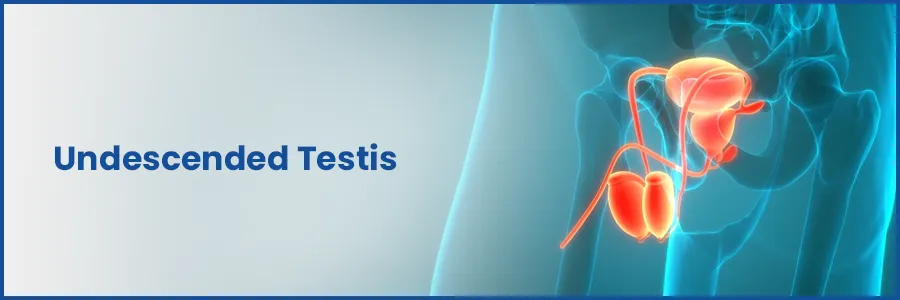Undescended Testis: Causes, Symptoms & Treatment

What is Undescended testis, a common medical condition among newborns and young boys, demands attention and understanding to ensure timely and effective management. In this article, we will delve into the causes, symptoms, and treatment options for undescended testis. Armed with accurate information, parents and caregivers can make informed decisions to promote the well-being of their children.
How is the Male Reproductive System Created?
- Start of the Journey: When a tiny baby is just beginning to grow, special areas start to form that will later become important for making a new life.
- Growing Testis: As the baby keeps developing, the special areas change into what we call "primitive testis." These baby testes start making hormones that help the male body grow the right way.
- Heading Down Low: As the baby keeps growing, the testes move from higher up in the belly to a lower spot called the scrotum. This is like finding a cozy home where they can stay, and it's important to keep them cool for making good stuff.
- Making Baby Makers: When a boy becomes a teenager, those testes become super active. They start making tiny things called sperm, which are needed to make a baby. This is called "Spermatogenesis."
- Teamwork with Other Parts: There are other important parts that help out too, like the epididymis, vas deferens, prostate gland, seminal vesicles, and the penis. All these parts work together to make, carry, and deliver the sperm to the right place during special grown-up moments.
Causes of Undescended Testis: Unraveling the Origins
The development of the testes begins within the abdomen during fetal growth. In most cases, they descend into the scrotum before birth. However, when this process is disrupted, Undescended Testis can occur. Factors such as hormonal imbalances, genetic predisposition, and issues during fetal development contribute to this condition.
Recognizing Symptoms and Potential Complications
Identification of undescended testes is crucial. While some instances resolve on their own as the child grows, persistent cases demand attention. Symptoms might include an empty scrotum or palpable testes in the groin. It's essential to consider factors like the right age for surgery and appropriate treatment options.
Exploring Treatment Avenues: From Monitoring to Surgery
Management of undescended testes varies. For retractile testes, a 'watch and wait' approach coupled with regular check-ups might suffice. However, if necessary, surgical intervention can reposition the testes. Early treatment is often recommended to prevent potential complications and ensure healthy testicular development Treatment.
Addressing the Complexity: Right Undescended Testis and Intra-Abdominal Variants
Right-sided undescended testis and intra-abdominal variants present unique challenges. The surgical correction becomes paramount in ensuring proper testicular descent, potentially mitigating future Fertility and health concerns.
Conclusion: Informed Choices for Optimal Care:
Understanding the intricacies of undescended testis empowers parents and individuals to make informed decisions. Seeking medical guidance, regular evaluations, and timely interventions are key to addressing this condition and its potential impact on reproductive health and overall well-being.
In navigating undescended testis, whether it's ectopic, retractile, or involving an ascending testicle, knowledge paves the way for comprehensive care and improved outcomes.
Remember, proper medical consultation is essential for accurate diagnosis and personalized treatment plans.
